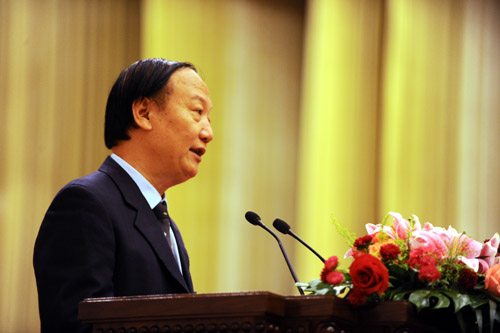Proposal to push retirement age to 65
- By Zhang Junmian
 0 Comment(s)
0 Comment(s) Print
Print E-mail China.org.cn, July 2, 2012
E-mail China.org.cn, July 2, 2012
On Sunday, social security official He Ping said that China should gradually push back its retirement age so that by 2045, all employees, male or female, could retire at the age of 65.
|
|
|
He Ping, director of the Social Security Research Institute under the Ministry of Human Resources and Social Security (MOHRSS). [File Photo] |
In response to the aging population problem, He explained that western countries usually encourage their employees to retire at a later age through an external mechanism. He proposed to implement the policy in 2016, and from then on gradually increase the retirement age, e.g. by one year every two years over a period of ten years. Currently, the retirement age is 60 for men, 55 for female civil servants and 50 for other female workers.
The proposal has found favor with a number of experts who believe that an extension of the retirement age can help slow down the reduction of an effective workforce as well as lower the expected raise in labor costs. Li Jun, an expert with the Institute of Quantitative & Technical Economics under the Chinese Academy of Social Sciences (CASS), agreed with He's argument and repeated that China's government should indeed act with caution if it were to adjust its retirement age policy.
Cai Fang, director of the CASS Institute of Population and Labor Economics, argued that China can gradually push back its retirement age in response to the dramatic decline in working age population. However, Cai did indicate that the circumstances for China to extend its retirement age are yet to mature since the country's older generation usually lacks the sufficient educational background to meet the new requirements of their job positions. Therefore, it would be better for the government to adopt a flexible policy in this regard and, at the same time, provide more training opportunities for the elderly.
Statistics from the second national population census show that China is the only country with an aging population exceeding 100 million. By 2010, the number of Chinese people over 60 years came to 178 million, accounting for 23.6 percent of the world's total.
Zheng Bingwen, head of the CASS Global Pension Fund Research Center, said: "China's working age population will drop from 970 million in 2010 to 870 million in 2050. This figure, after reaching its peak at 998 million in 2015, will annually drop a rough 3.66 million on average." The aging problem not only puts a heavier burden on the working age population, but indicates a serious reduction in the nation's workforce as well.
Li estimated that by 2050, China's working age population (aged 15-59), will be reduced to 710 million, a staggering 230 million less than in 2010. His estimation entails that from 2030 onwards, China will face a severe shortage in workforce supply.







Go to Forum >>0 Comment(s)